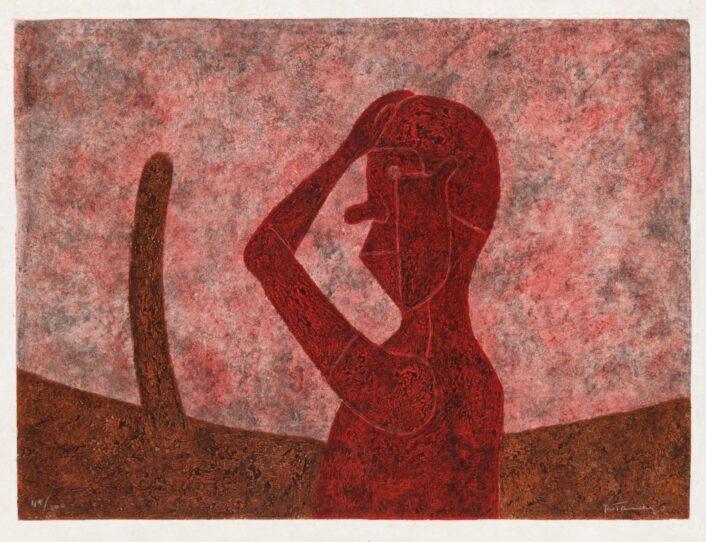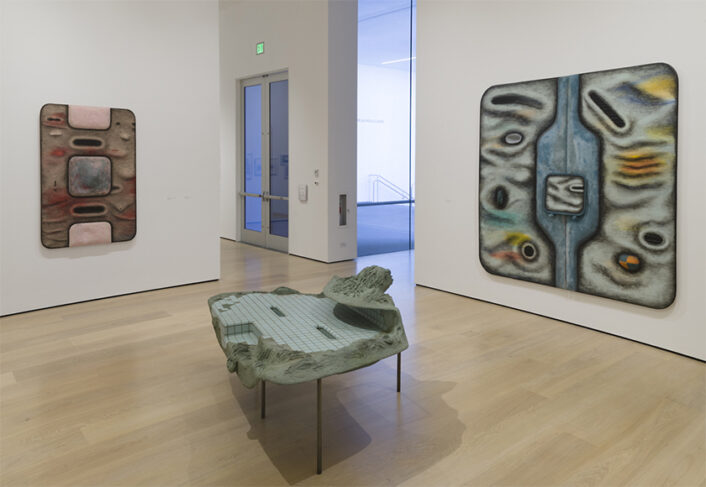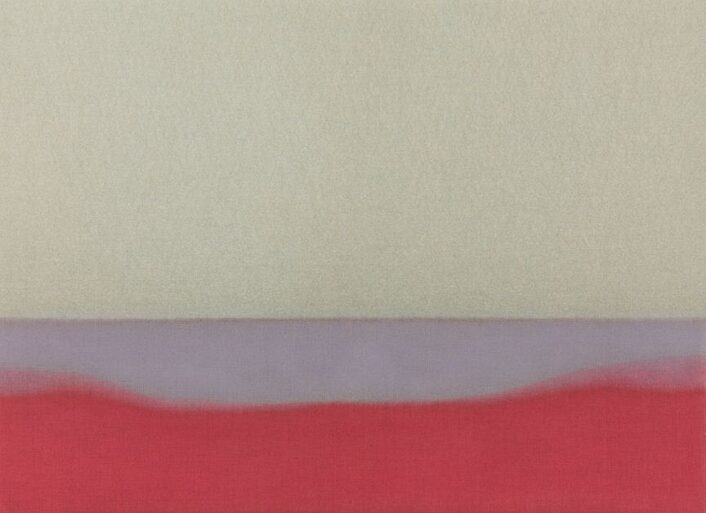Fine Art
Victor Pasmore’s printmaking… revisited

“Green Darkness,” 1986.Etching, from an edition of 90.
Dimensions are: 25.5″ x 26.5″
Image courtesy of: Marlborough Graphics
No one would have expected Victor Pasmore to become one of Britain’s most familiar post-impressionist artists. The former clerk in London’s Public Health Department decided to become a full-time artist in 1938, just around the time the world’s affairs were teetering in a state of complete uncertainty.
Initially, Pasmore experimented with different art styles… specifically; he tested out art styles reflective of the art developments that had been occurring in France since the 1880’s. Realizing the need for a legitimate art school that taught lyrical abstraction, Pasmore, along with William Coldstream, Graham Bell, and Claude Rogers, founded the Euston Road School. The school was open for three years. Pasmore was active in teaching “Cezannesque Realism,” a style that was similar to his own work with landscapes and portraits.
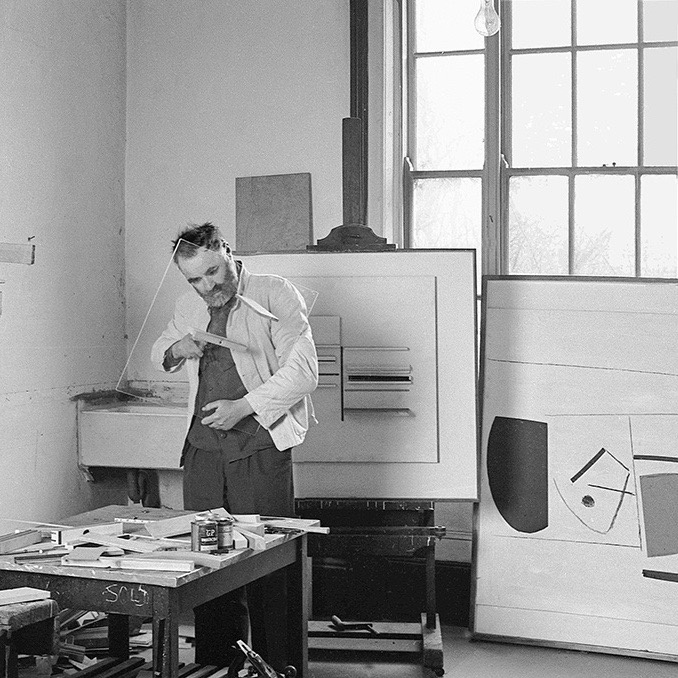
Pasmore in his studio.
Image courtesy of: Jenna Burlingham Gallery
It is clear that World War II had a monumental effect on Pasmore. After his apartment was destroyed by Nazi aerial bombing, Pasmore immersed himself in the radical writings of Cezanne, Gauguin, and Van Gogh. Always a rebellious spirit, these works further ignited the artist’s wayward spirit. Courtesy of 1st Dibs, “These events fueled his most radical stylistic transition: into experimental abstraction. Recollections of friends and students paint a picture of the man on the bank of this shift.”
In 1947, Pasmore began experimenting with abstraction in earnest. Initially, his canvases were filled with spirals. However over time, Pasmore’s mid-career works began to show unsteady groupings of irregular shapes that “balance precariously, but lyrically, on and around one another.”
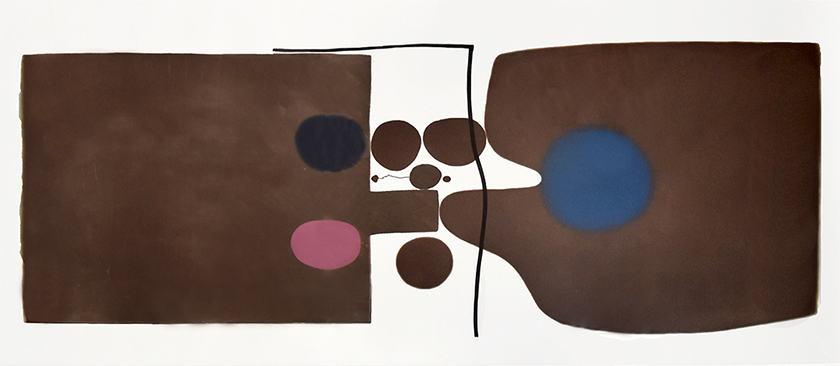
“Villa dei Misteri,” 1980. Etching and aquatint on Magnani paper. Numbered from an edition of 90 with 15 artist proofs.
Dimension are: 27.5″ x 79″
Image courtesy of: Masterworks Fine Art
During the 1960’s, Pasmore’s work became softer and the geometries he painted grew more rounded. Slowly, the artist began introducing curved lines, spherical edges, and bright colors. Interestingly, though not surprisingly, this artistic change coincided with Pasmore’s move to Malta. The difference in climate from London’s rain-drenched, dreary backdrops to Malta’s sun-filled, vibrant landscapes clearly influenced the artist’s palette and structures.
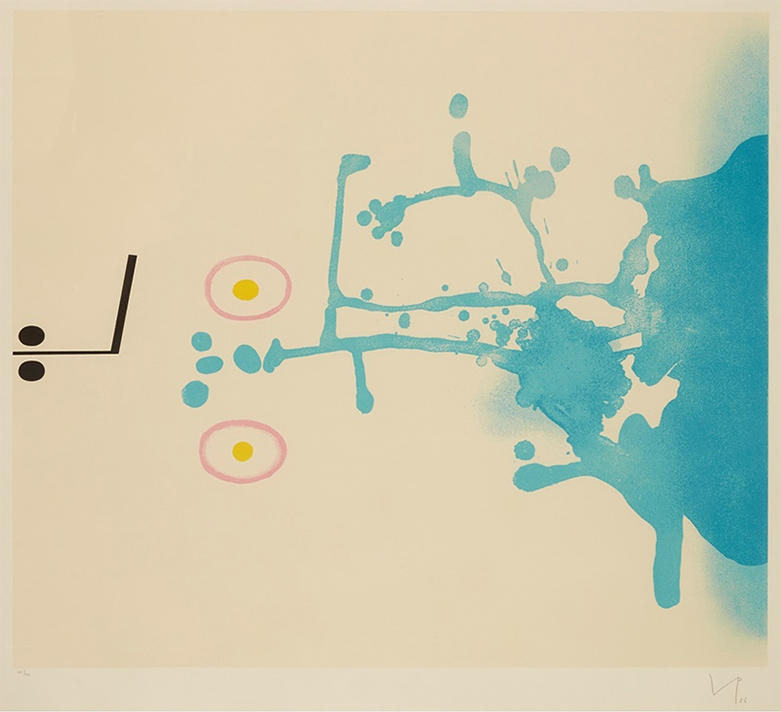
“Blue Fantasy II,” 1986. Screenprint by Kelpra Studios in London, blindstamp visible. Numbered 69 out of an edition of 70.
Image courtesy of: Lyon & Turnbull
The same year he relocated to Malta, Pasmore began experimenting with printmaking at the 2RC printshop in Rome. He did this in conjunction with painting; however soon, printmaking became a main part of the artist’s work. Pasmore worked with six different printers throughout Europe over the course of thirty years. Marlborough Graphic Gallery’s Bianca Clark noted, “The printmaking process served as a collaboration between Pasmore and the printer, with the artist drawing on the studio’s particular skills and developing images in conjunction with them.”
Each printer inspired the artist to work in a unique style that was specific to the printer itself. Specifically, etching, screen-print, and aquatint allowed for new variations and unfamiliar outcomes. This excitement fueled Pasmore’s hunger for continued experimentation.
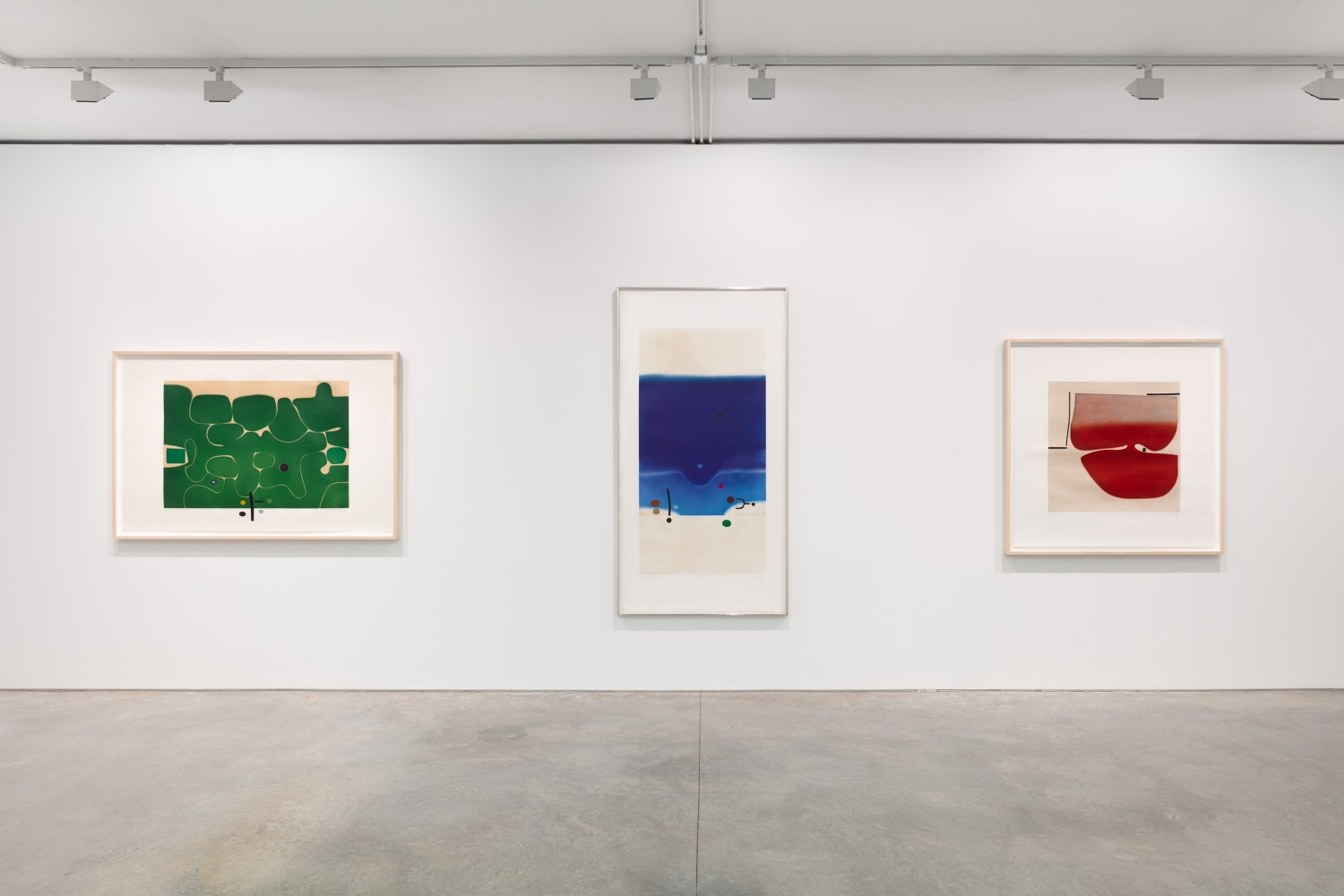
Installation view of Marlborough Graphic Gallery’s Victor Pasmore: Prints.
Image courtesy of: Marlborough Graphics Gallery, photographed by: Pierre Le Hors
Earlier this year, Marlborough Graphics Gallery presented Victor Pasmore: Prints. The exhibition presented only Pasmore’s graphic works which the artist developed during a revival of print-making in the 1960’s and until his death in 1998. The gallery’s director’s categorized the prints as (courtesy of Marlborough Graphics Gallery), “a synthetization of mathematics and geometrical forms, often juxtaposed with poetry written by Pasmore.”
The show was an amazing example of how the Pasmore and his chosen printmaking studios worked together to develop images that, still today, are truly the definition of “teamwork.”
